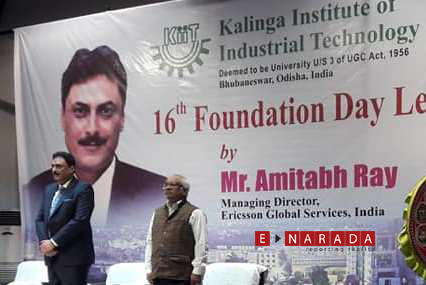Bangalore, March 14, 2013:
Narayana Nethralaya, the Bangalore-based Super Specialty Eye Hospital, today announced the setting up of Asia’s first laboratory dedicated exclusively towards research, diagnosis and treatment of ‘Dry Eyes’, a lifestyle disease induced by long-term exposure to computers and also caused by systemic diseases, such as diabetes and arthritis.
Dryness of the eyes is caused by multiple factors, such as exposure to computers for more than 6 hours per day (leading to evaporative dryness); systemic diseases like diabetes, arthritis, use of medications, and menopause. The most common cause is glands on the eye lids getting blocked and causing meibomian gland dysfunction, eventually leading to dryness of the eyes.
 The evaporative dry eye condition is found commonly among people in the age group of 18-45 years while dryness is caused in the older age group because of systemic diseases. Long standing dryness causes ocular surface problems with chronic redness, irritation and finally causing damage to the stem cells of the eye.
The evaporative dry eye condition is found commonly among people in the age group of 18-45 years while dryness is caused in the older age group because of systemic diseases. Long standing dryness causes ocular surface problems with chronic redness, irritation and finally causing damage to the stem cells of the eye.
“At Narayana Nethralaya, we have set up a Dry Eye lab with advanced machines to study tears both for imaging and also to analyse the tears components. This helps us in understanding the pathology better. Patients with lid problems like meibomian gland dysfunction can undergo lid Thermal Pulsation Therapy to open them and this will help to pump good quality lipids to tears. We have invested more than Rs 2.5 crore on this lab and it will benefit the population facing this particular problem,” said Dr. Rohit Shetty, Vice Chairman, Narayana Nethralaya.
A specialised department called CODE – Centre for Occupational Dry Eye – which explores all the problems of occupational dry eye in a professional way, is also part of the Dry Eye lab. “Though Dry Eyes can be cured through lubrication, improving lid hygiene and treatment of systemic diseases, we at Narayana Nethralaya present direct evaluation of tears called ‘lipiview’ and the same will assist us in offering customized treatment to the patients. We are the first hospital in Asia to offer this facility,” pointed out Dr. Rohit Shetty.
Tears in our eye consist of 3 layers, lipid, aqueous and mucin. When the lipid layer is absent, the condition is called evaporative dry eye. In systemic diseases like arthritis, production of tears is deficient in the aqueous layer. In evaporative dry eyes, though tears are produced in good amount, the quality is low due to poor lipid content and tears dry fast.
The symptoms of Dry Eye condition range from irritation, burning, rubbing of eyes, foreign body sensation, blurring of vision, tiredness, glare while driving, to the thickening of lids.
“The awareness of dry eyes is extremely limited even in a city like Bangalore. Not many people are aware of the condition till they visit the hospitals. We are seeing around 45% to 55% cases in evaporative dry eye. This is close to 50 per cent increase in the last 10 yrs and is a serious cause for concern because it is emerging as a major lifestyle disease. People, especially those exposed to long working hours before the computers, need to undergo tests at least twice a year,” Dr. K. Bhujang Shetty, Chairman & Managing Director, Narayana Nethralaya added.
The Dry Eye lab incorporates newer and advanced machine like Tear Science. The study of tears for Osmolarity and check for health of tears are also carried out. “Some patients need advanced Proteonomics to study the inflammatory mediators in tears. If patients are diagnosed with evaporative dry eye then they can undergo thermal lid compression treatment for 12 minutes, called ‘Lipiflow’. This procedure and investigation instruments are first of its kind in Asia,” Dr. Rohit Shetty said.
In addition to treatment, the lab will enable Narayana Nethralaya to foster research into the rising incidences of dry eye condition among working professionals.




